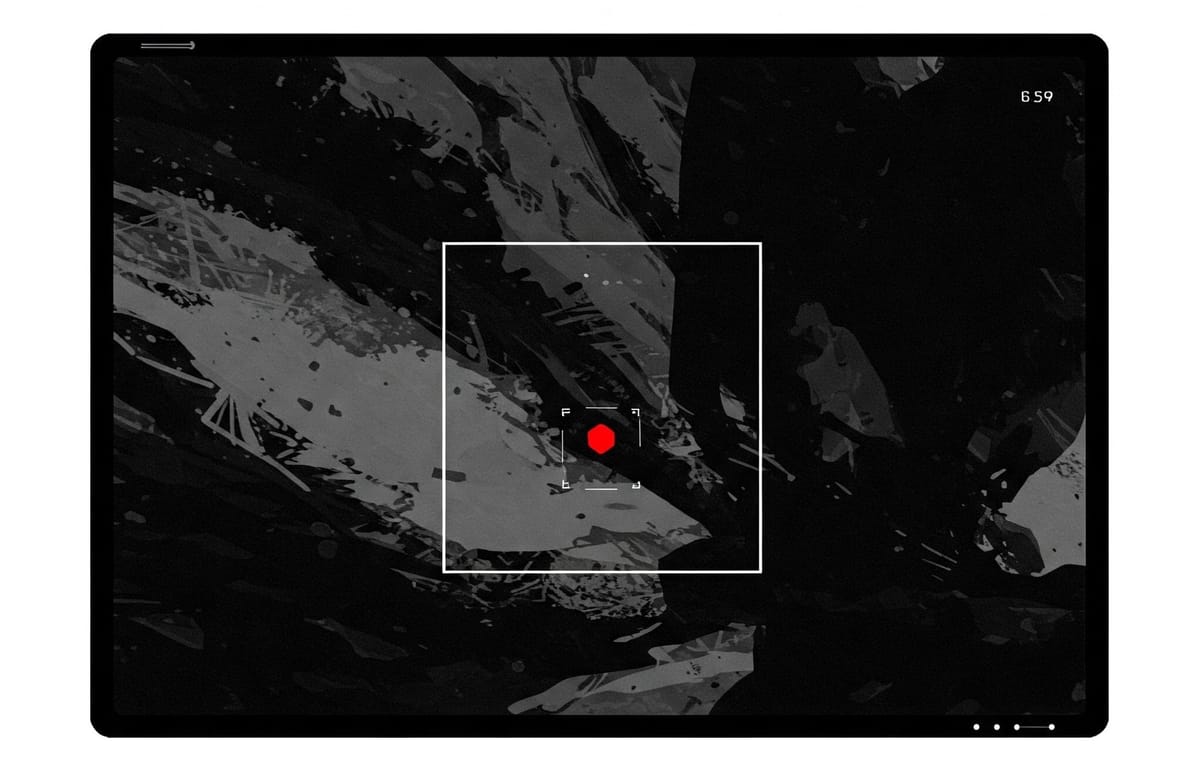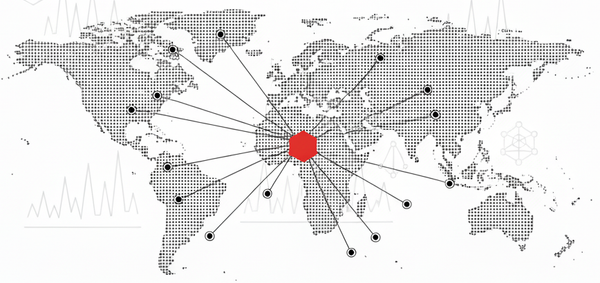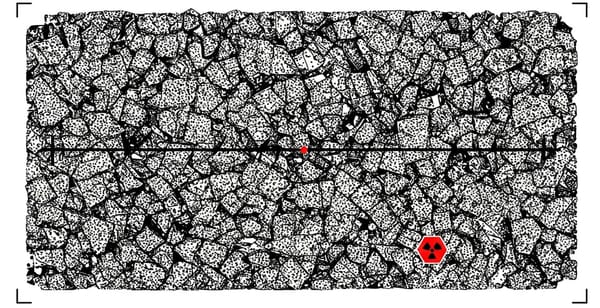Radiation Portal Monitors: Your Guide to Detecting Invisible Threats
Explore how Radiation Portal Monitors (RPMs) safeguard borders, ports, and facilities by detecting invisible radioactive threats. Learn how they work and why they are crucial for global security.

Are you curious about the technology safeguarding borders, ports, and critical facilities from hidden radioactive materials? Have you ever wondered how authorities detect something you can't see, smell, or touch? In a world where the movement of goods and people is constant, ensuring safety and security against radiological threats is paramount. This post dives into the fascinating world of Radiation Portal Monitors (RPMs), explaining what they are, how they work, and why they are indispensable in today's security landscape.
By the end of this article, you'll have a clear understanding of these unseen sentinels and their vital role in preventing nuclear terrorism, accidental contamination, and illicit trafficking of radioactive materials.
What is a Radiation Portal Monitor (RPM)?
Imagine a security checkpoint that scans not for metal but invisible radiation. That's the core function of a Radiation Portal Monitor, or RPM. These large-scale radiation detection systems are typically designed as stationary or portable "portals" that screen individuals, vehicles, luggage, and cargo.
Key characteristics of RPMs:
- Passive Detection: Unlike X-ray machines, they do not emit radiation. They detect radiation coming from the object passing through.
- Automated Screening: RPMs provide an efficient, automated first line of defense against radiological threats in high-traffic environments.
- Primary Function: To detect the presence of unauthorized radioactive materials, preventing smuggling and accidental contamination.
The widespread deployment of thousands of RPMs globally, particularly at borders and major ports, highlights their crucial role in national and international security frameworks. Their use expanded significantly following events like the collapse of the Soviet Union and the 9/11 terrorist attacks, which underscored the need to guard against unsecured nuclear materials and unconventional threats.
How Radiation Portal Monitors Work: Uncovering the Invisible
The basic principle behind RPM operation is quite intuitive. Every location has a natural level of background radiation from cosmic rays and naturally occurring radioactive materials in the environment. An RPM continuously measures this background to establish a baseline.
When a person, vehicle, or container passes through the portal, the detectors measure the radiation emanating from it. The system's control unit compares this new measurement to the established background level.
- The system triggers an alarm if the detected radiation is significantly higher than the background, exceeding a pre-set alarm threshold.
- This threshold is carefully calibrated to balance the need to detect weak sources against the risk of false alarms from normal background fluctuations.
- Interestingly, a significant decrease in radiation can also trigger an alarm, as a dense object might shield the detectors from the natural background.
RPMs are primarily designed to detect two specific types of ionizing radiation known for their penetrating power:
- Gamma Radiation: Often described as high-energy light packets, similar to X-rays. Gamma rays can penetrate substantial amounts of material, making them detectable even when sources are shielded or inside containers. This allows for broad screening of materials used in medicine, industry, and potential "dirty bombs".
- Neutron Radiation: Subatomic particles emitted by certain nuclear materials, particularly "special nuclear material" (SNM) like plutonium and highly enriched uranium, essential for nuclear weapons. Detecting neutrons is critical for targeting materials related to nuclear proliferation.
While alpha and beta radiation exist, their limited penetration means they are easily blocked by everyday materials, making them less suitable for detection by RPMs screening through containers or vehicles.
A major operational challenge for RPMs is distinguishing between legitimate radiation sources and potential threats. Many common materials contain naturally occurring radioactive material (NORM), and medical patients who have undergone nuclear medicine procedures will temporarily emit radiation. These often cause "nuisance alarms," which can account for the vast majority of alarms in some settings. Each alarm requires time-consuming secondary inspection, impacting efficiency.
This challenge drives the continuous development of more sophisticated RPMs with improved energy resolution and advanced algorithms to differentiate radiation signatures and reduce nuisance alarms. The goal is not just detection, but accurate identification of the source.
Inside the Sentinel: Components of an RPM
A typical Radiation Portal Monitor is an integrated system with several key components:
- Detectors: The core sensing elements. Plastic scintillators (PVT) are common for gamma detection due to their cost-effectiveness and size, while gas-filled tubes (historically He-3, now alternatives like Li-6 or Boron-10) are used for neutrons.
- Photomultiplier Tubes (PMTs) and Electronics: Convert light flashes from scintillators into electrical pulses and process signals from other detectors.
- Pillars/Housing: The physical structure forming the portal is designed to be rugged and sometimes includes shielding.
- Occupancy Sensor: Detects when something enters the portal, often using an infrared beam.
- Control Unit / Software: This is the system's "brain" that processes signals, tracks background, compares measurements, applies algorithms, triggers alarms, and manages operations.
- Alarms: Provide audible and visual notification of detection.
Optional components can include video cameras, networking capabilities, weatherproofing, and uninterruptible power supplies.
Here's a simple breakdown of the key components:
| Component | Simple Function |
|---|---|
| Detectors | Sense incoming gamma or neutron radiation |
| PMTs / Electronics | Convert radiation detection into electrical signals |
| Pillars / Housing | Hold detectors, form the portal structure |
| Occupancy Sensor | Detects when something enters the portal |
| Control Unit/Software | Analyzes signals, compares to background, triggers alarm |
| Alarms (Lights/Sound) | Alert operators to a detection |
An RPM is a complex system in which hardware and sophisticated software work together to provide reliable detection in demanding environments. The choice of detector technology impacts capabilities and cost, balancing performance with practical constraints.
Where are Radiation Portal Monitors Used? Strategic Deployment
RPMs are strategically placed at "bottlenecks" or "choke points" where controlling the movement of people or goods is crucial. This maximizes the chance of intercepting illicit materials or detecting accidental contamination.
Common locations include:
- Border Crossings (Land, Sea, Air): Extensively used for national security to screen vehicles, containers, and sometimes pedestrians for smuggled nuclear or radiological materials.
- Airports and Seaports: Screening cargo, luggage, and passengers at major transportation hubs.
- Nuclear Facilities: Preventing unauthorized removal of materials and monitoring for contamination.
- Scrap Metal Recycling Plants and Steel Mills: A crucial industrial safety application to detect "orphan sources" before they contaminate facilities and products.
- Waste Disposal and Incineration Facilities: Screening incoming waste to prevent improperly handling of radioactive materials.
- Secure Government Buildings and Military Bases: Part of access control systems.
- Major Public Events: Portable units for temporary screening.
This placement strategy targets points of transition and aggregation. The variety of locations highlights RPMs' dual utility in addressing security (preventing terrorism and proliferation) and safety (preventing accidental contamination and protecting workers).
Why We Need RPMs: Security and Safety Imperatives
The deployment of Radiation Portal Monitors addresses critical security and safety needs in a world where radioactive materials, while beneficial, also pose significant risks if misused. Their fundamental purpose is to detect and deter the illicit movement of these materials.
From a security perspective, RPMs are paramount:
- Preventing Terrorism: They detect materials that could be used in nuclear weapons (SNM) or Radiological Dispersal Devices (RDDs or "dirty bombs"), preventing the spread of radioactive contamination and its devastating consequences.
- Enhancing National and Global Security: By controlling the movement of dangerous materials, RPMs contribute to overall security and stability, involving national and international agencies.
- Deterrence: Their presence discourages attempts to move illicit materials through monitored routes.
From a safety perspective, RPMs are equally important:
- Preventing Contamination: Especially in industries like scrap metal recycling, they find lost or abandoned radioactive sources before they cause widespread contamination and costly cleanups.
- Ensuring Safe Handling and Disposal: Facilities using radioactive materials help ensure materials are not inadvertently removed or mixed with regular waste.
It's important to remember that RPMs are part of a broader "defense-in-depth" strategy, integrated with secondary inspection procedures, trained personnel, and regulatory frameworks. Effective operation involves balancing detection capabilities with minimizing disruption to legitimate activities, a challenge addressed by ongoing technological advancements.
Different Monitors for Different Needs: Types of RPMs
RPMs come in various configurations tailored to the specific objects being monitored and the operational environment:
- Pedestrian RPMs: Designed for screening people, often at building entrances or pedestrian checkpoints.
- Vehicle RPMs: Larger systems for screening cars, trucks, and trains at borders and facility entrances.
- Cargo/Container RPMs: Optimized for screening large shipping containers.
- Portable/Deployable RPMs: Easily transported and assembled for temporary use at events or in emergency response.
RPMs can also vary in design (single vs. double pillars) and detection capability (gamma-only vs. combined gamma-neutron).
Here's a summary of common RPM types:
| RPM Type | Typical Use / Screening Target | Key Feature Examples |
|---|---|---|
| Pedestrian | People walking through checkpoints, building access | Narrower width, often head-to-toe coverage |
| Vehicle | Cars, trucks, trains at borders, facilities, etc. | Wider/taller portals, robust construction |
| Cargo Container | Shipping containers at ports, borders | Large portal size, optimized for container shape |
| Portable/Deployable | Temporary checkpoints, events, field use | Easily transported and assembled, battery power option |
This variety ensures RPM technology can be effectively applied across a wide spectrum of security and safety challenges.
RPMs as Security and Smoke Detectors
Understanding RPMs can be simplified by considering them a combination of a security metal detector and a very sensitive smoke detector.
Like a metal detector archway, an RPM creates a defined portal that must be passed through, searching for something specific that's not visible.
Like a smoke detector, an RPM monitors the environment, establishing a normal baseline (background radiation). If the radiation level rises above a pre-set threshold, like smoke triggering a smoke detector, the RPM alarms. More advanced RPMs even provide additional information about the detected radiation, similar to how some modern smoke detectors might indicate the type of fire.
This analogy helps illustrate the core concepts of pass-through screening and threshold-based alarming against a baseline.
The Indispensable Role of Radiation Portal Monitors
Radiation Portal Monitors are sophisticated, automated systems that act as crucial sentinels against the invisible threat of radioactive materials. Their strategic deployment at critical locations worldwide provides an essential layer of automated screening, significantly enhancing both security and safety.
By detecting gamma and neutron radiation and alarming when levels exceed the natural background, RPMs play a vital role in preventing nuclear terrorism, proliferation, and accidental contamination. While not a standalone solution, they are indispensable components of a multi-layered approach to managing radiological risks.
As technology advances, RPMs will become even more effective at distinguishing threats from benign sources, further streamlining security processes while maintaining high levels of detection. These often-unseen systems are a significant technological investment in protecting society from potentially devastating radiological consequences.
Optimize Your Understanding: Further Reading
- Radiation Detectors Explained: Principles, Technologies, and Applications
- Radiation Detection for Dummies: A Comprehensive Guide
- Understanding Gamma Radiation Detection in Nuclear Emergencies
What are your thoughts on the role of technology in global security? Please share your comments below and subscribe to our blog for more insights into the science and technology shaping our world.




